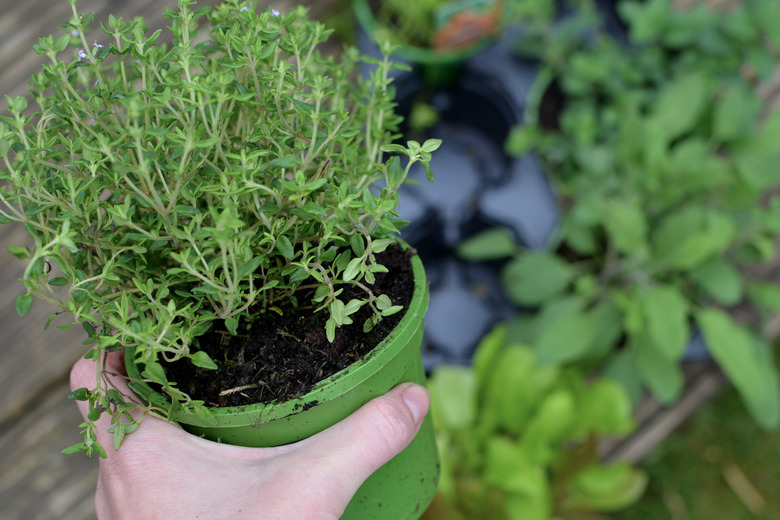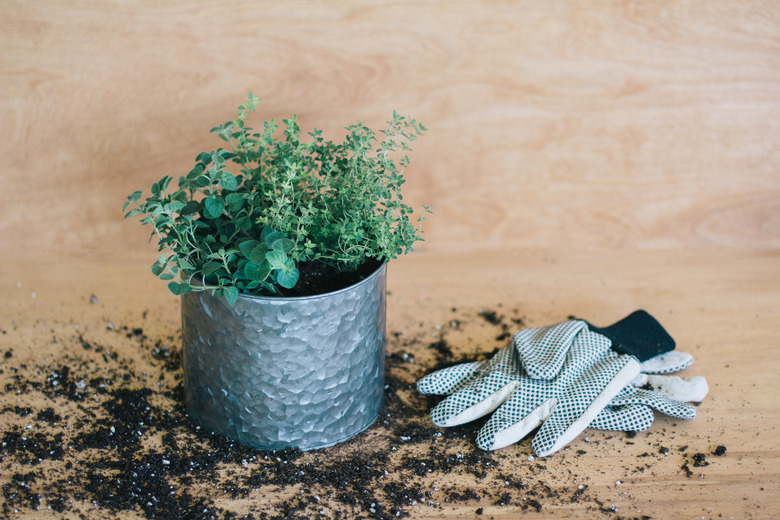Want To Grow An Herb Garden? Follow These (Easy) Steps
We may receive a commission on purchases made from links.
Earth Day is here, but as far as we're concerned, every day is a day to celebrate Mother Earth. In honor of April 22nd, here's how we're celebrating: by growing an herb garden. Fresh herbs make everything taste better, from basil on a mozzarella and tomato salad, dill sprinkled on grilled salmon, to mint leaves mixed into yogurt and berries. Garden herbs make ordinary cooks into culinary rock stars. (And if you want to dry your herbs, this DIY drying rack is a kitchen must-have)
Ready to get started? Growing your own herb garden is simply a matter of following a few, easy steps.
Which Herbs to Choose?
Which Herbs to Choose?
Herbs are harder to define than they are to grow. Some limit herbs to plants that do not develop woody stems, but that's a bit narrow. Let's just call them plants used for medicinal purposes, culinary flavoring, or aromatic qualities. Yes, the list is long, extending far beyond the familiar kitchen herbs like parsley, sage, rosemary, and thyme. Some herb gardeners even include lavender and marigolds.
Your first task when creating an herb garden is to decide which plants to include. Although most of us use herbs to enhance food, it's also possible you want to develop an herb garden to make potpourri or create organic dyes. Whatever your motive, determine which herbs would fit the bill. For a culinary herb garden, favorites might include rosemary, basil, cilantro, marjoram, thyme, tarragon, chives, dill, mints, sage, and parsley.
Pots or Plots?
Pots or Plots?
Most herbs are easy to grow whether you have a spacious backyard or just an apartment with a balcony, fire escape, or sunny window sill. You don't have to place all the herbs together, but it's convenient to have all of your herb plants in the same area, and it will remind you to use them. For a culinary herb garden, you'll want the location relatively close to the kitchen for easy use.
Most herbs grow well both in containers and in a garden bed, so the pots-or-plots choice depends on your preferences and circumstances. Pots may be preferable in apartments or where space is limited. If you opt for pots, plan on one container per herb since more aggressive plants might quickly crowd others out. You'll find many great pots of different sizes available in styles ranging from cheerful to elegant.
If you want to install herbs in the ground outside, you want an area that gets at least six hours of daily sun. A few types of herbs — like mint and sweet-woodruff — prefer a shadier spot, but most thrive in full direct sun. Well-draining soil is a must, but you don't need to heap on the fertilizer. Many herbs are native plants and grow better on thinner soil. The flavor also tends to be more intense. If you must fertilize, add no more than an inch of organic compost blended well into the soil before planting.
If well-draining soil is an issue for you, you can sidestep the problem by putting in a raised bed garden. You can make your own from spare lumber or buy them from stores like Amazon, Home Depot, or Walmart. Just get a good quality raised bed soil and fill them up.
Seeds or Starts?
Seeds or Starts?
Plants grow in the wild from seeds, so relying on seeds to start your herb garden is certainly possible. You can start the seeds indoors in seed-trays in a sunny window, then, three or four weeks later when the plants are thriving, transplant the starts to the garden. But many gardeners don't have the patience to wait this long, and that's OK, too. Your garden store almost certainly stocks herb starts, sometimes even in biodegradable containers that can be dropped right into a hole in the soil.
Follow the spacing and seeding requirements for each plant. You'll find them on the seed packet or plant tags. Alternatively, you can find these easily online. Be sure to keep the plant at the same depth as it was in its original container. If mint (of any variety) is among your chosen herbs, consider planting it in a pot since it spreads like a weed. To keep it in the herb garden plot, just drop the container into a hole in the soil. It will prevent the roots from exploring the rest of the yard.
How to Care for Herbs?
How to Care for Herbs?
Some herbs have a drought-tolerant reputation. But, like other plants, all herbs need water to grow, and the hotter the weather, the more frequently they need a drink. When you are just getting the herb garden started, check the soil daily. Poke a finger into the soil and see if the top inch is dry and, if so, water thoroughly. Containers dry out faster than plot-planted herbs.
You'll want to keep weeds down in the herb beds, too. Weeds can shade out shorter herbs and take over needed space. They can also bring unwanted insect pests into the herb garden. Every week or so, do a little weeding to keep things clean and tidy.
Harvest herbs early and often. That is, harvest in the morning, cutting off what you need with a pair of kitchen scissors. Don't ever take more than one-third of an herb plant to allow it to recover from the "pruning." Better to harvest smaller amounts often, cutting just above a leaf junction, since frequent snipping helps herbs to grow thicker and bushier. Also snip back flowers forming on herbs to help the plants last longer.


